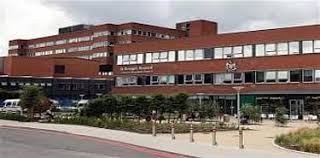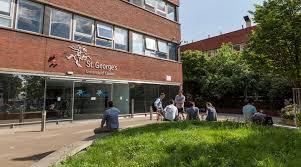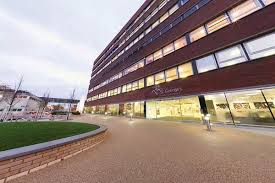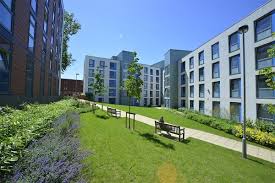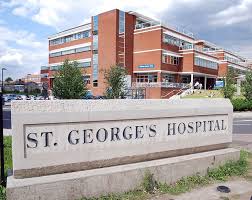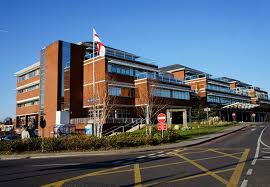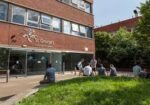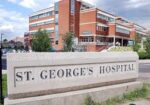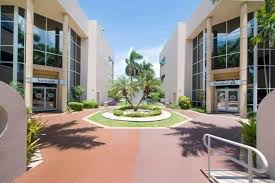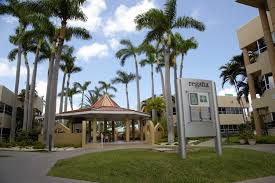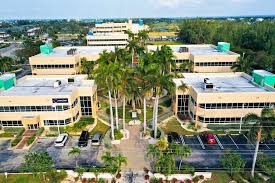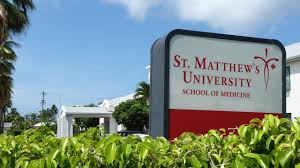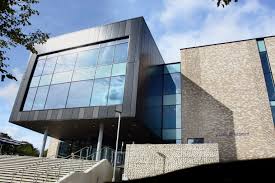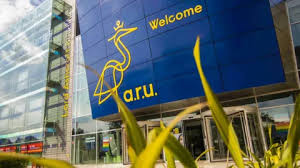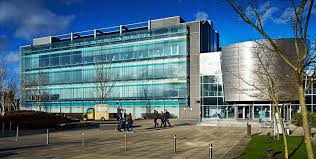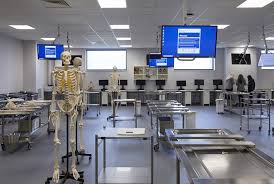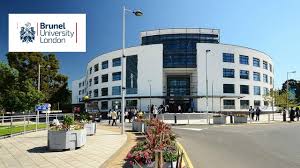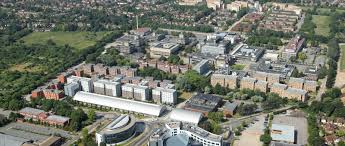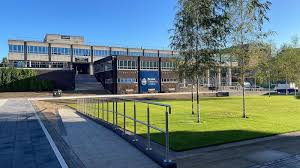St. George’s University of London St George’s Hospital in London is steeped in history and of particular significance in the background of voluntary hospitals in the 18th and 19th centuries. It is an illustration of how healthcare was structured in Britain prior to the founding of the NHS in 1948. Being a voluntary hospital, it relied greatly on donations and charity, with its financing coming from affluent benefactors, subscribers, and donors, who were usually aristocrats or those of social status. These donors were given benefits like the right to admit patients, having an influence on hospital management, and being able to take part in fundraising.
About St. George’s University of London
Voluntary hospitals such as St George’s were established on the basis of charity for the “sick poor,” treating patients who were not able to afford private medical treatment. Yet, these hospitals operated with strict social and medical admissions criteria. Patients were frequently asked to secure a letter of recommendation from a subscriber or governor to be considered for treatment, particularly in the earlier years. The hospitals sought to rehabilitate patients so they might get back to work, and the national economy could benefit. Treated only were those found to be worthy of charity—individuals who, temporarily, could not work due to sickness. Chronic and incurable ailments frequently were not considered.
St. George’s University of London – Table of Contents
- About
- Advantages
- Ranking
- Departments and Course Duration
- Facilities And Infrastructure
- Required Documents
- Eligibility Criteria
- Admission Process
- Benefits
- Privileges And Benefits for Indian Students
- FAQ’s
The hospital’s strategy in treating patients was shaped by economic and moral thinking. It was short of resources, with demand for care grossly in excess of funding and facilities. Consequently, voluntary hospitals such as St George’s concentrated on dealing with acute illness and patients likely to make a speedy recovery. Patients who had chronic or incurable illnesses, or who were “undeserving” (ie, carrying social stigma, such as those with sexually transmitted diseases) were frequently denied treatment.
The emergence of specialized hospitals in the 19th century, including eye hospitals and children’s hospitals, further moulded the healthcare landscape, with voluntary hospitals such as St George’s expanding into specialist departments to compete for funding and resources.
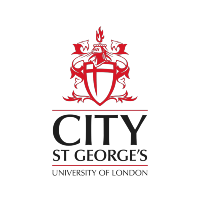
The advent of the NHS in 1948 was a tipping point, since voluntary hospitals such as St George’s became converted to public health institutions no longer dependent on charitable donations but maintained by the state. The historical legacy of such voluntary hospitals as St George’s continues to exist in the shape of contemporary health systems that have the goal of offering more inclusive access to health care, rather than the previously class-based and economically motivated practices.
Advantages of Studying in St. George’s University of London
Specialized Focus on Medicine and Health Sciences:
The university specializes in these fields, offering a tailored curriculum and expertise to prepare students for careers in healthcare.
Practical Learning Opportunities:
Students gain hands-on experience from day one through clinical placements, simulation exercises, and direct interaction with healthcare professionals.
Learning in a Clinical Environment:
Located within a teaching hospital, the campus immerses students in a professional healthcare setting, enhancing their practical education.
Real-world, Relevant Education:
The curriculum is designed by academics who are actively working in the healthcare field, ensuring students receive current and applicable knowledge.
High Graduate Employability:
St. George’s consistently ranks highly for graduate prospects, equipping students with the skills needed for successful careers in medicine and health sciences.
Recognized for Academic Excellence:
The university is renowned for its strong academic and research credentials, holding high rankings in both the UK and internationally.
Diverse and Inclusive Community:
St. George’s promotes a vibrant, welcoming environment with students from diverse backgrounds, fostering a sense of belonging and encouraging social interaction.
Robust Alumni Network:
Students gain access to a strong network of graduates who have made significant contributions to medicine and health sciences, providing valuable mentorship and career opportunities.
Affordable and Flexible Learning Options:
The University of London offers some programs with flexible and affordable learning pathways, making education more accessible for a broader range of students.
Latest Notifications:
St. George’s University of London – Ranking
St. George’s University of London has a long history that goes back to 1733, when St. George’s Hospital was originally opened at Hyde Park Corner in London. Even though the medical school, which eventually became the university, was not officially established until 1834, the physicians and surgeons at St. George’s were already instructing medical students. A number of medical and anatomical schools, including Samuel Lane’s School of Anatomy and Medicine, were affiliated with St. George’s from the start.
On the eve of World War II, reconstruction of St. George’s at its Hyde Park Corner location was planned but was shelved with the war breaking out. During the war years, following the evacuation of central London, proposals to shift St. George’s were first started.
Following the establishment of the National Health Service in 1948, St. George’s was incorporated into the St. George’s Hospital Teaching Group of the South West Metropolitan Regional Hospital Board. It was planned in the early 1950s to relocate St. George’s to the sites of the Grove Fever Hospital and Fountain Hospital at Tooting.
The Grove Hospital opened for patients in 1951 and was officially the site for St. George’s Hospital from 1953. The Fountain Children’s Hospital, which was situated alongside, was subsequently absorbed within the redevelopment of St. George’s when it was moved to Queen Mary’s Hospital in Carshalton.
Latest Updates:
Departments and Course Duration in St. George’s University of London
Departments at St. George’s, University of London (Medical School)
St. George’s houses various academic and clinical departments that support the MBBS program and research in health sciences:
1. Clinical Medicine
- Focuses on internal medicine, surgery, psychiatry, pediatrics, and general practice.
- Involves rotations in NHS hospitals and general practices.
2. Infection and Immunity
- Studies infectious diseases, microbiology, immunology, and public health.
- Integrates with research and epidemiology.
3. Medical Education
- Covers curriculum design, teaching, assessments, and the science of learning in medicine.
4. Molecular and Clinical Sciences
- Focuses on molecular biology, genetics, pathology, and translational research.
5. Population Health and Social Science
- Emphasizes community health, epidemiology, health policy, and medical ethics.
6. Anatomy and Physiology
- Deals with the structure and function of the human body; foundational for early MBBS years.
7. Pharmacology and Therapeutics
- Covers drug action, clinical pharmacology, and therapeutic approaches in medicine.
Both programs include:
- Pre-clinical phase: Basic medical sciences, anatomy, biochemistry, and physiology.
- Clinical phase: Rotations in hospitals and general practices with increasing responsibility.
Facilities And Infrastructure in St. George’s University of London
1. Teaching Hospital Environment
- The university is uniquely co-located with St George’s Hospital, one of London’s largest teaching hospitals.
- Students benefit from clinical exposure from day one, with real patient interactions and case-based learning.
- On-site facilities ensure a seamless transition between academic learning and hands-on clinical training.
2. State-of-the-Art Laboratories
- Modern research and clinical labs are equipped for anatomy, physiology, pharmacology, and molecular sciences.
- Students engage in practical experiments using cutting-edge equipment and simulation tools.
3. Clinical Skills and Simulation Centre
- Features high-fidelity mannequins and simulation suites that mimic real clinical settings (ER, GP, surgery).
- Provides immersive training for procedures, diagnosis, and emergency care.
- Includes mock wards, surgical theatres, and ICU setups for realistic learning experiences.
4. Library and Learning Resources
- St George’s Library is one of the best medical libraries in the UK, with
- 24/7 access
- Extensive digital and physical collections
- Quiet zones, group study rooms, and computer clusters
- Access to medical journals, databases (like PubMed), and e-books
5. IT & E-Learning Support
- Fully equipped computer labs and Wi-Fi access across campus.
- Online learning platforms like Canvas and Moodle to support blended and flexible learning.
- Access to digital anatomy tools, lecture recordings, and virtual patient scenarios.
6. Accommodation
- Horton Halls: University’s main student housing facility.
- Located within walking distance of campus.
- Fully furnished ensuite rooms and shared kitchen/living spaces.
- Safe and secure with 24/7 reception.
7. Food & Dining
- On-campus cafeterias, coffee shops, and food outlets offer varied and affordable options.
- Located in Tooting, students have access to a wide range of local cafes, restaurants, and international cuisine.
8. Sports & Recreation
- Access to sports clubs and fitness activities through University of London’s sports facilities.
- Student Union arranges recreational events, gym memberships, yoga, football, and more.
9. Student Support & Societies
- Vibrant Student Union (SGSU) with societies for medicine, drama, sports, culture, and volunteer work.
- Dedicated teams for mental health support, academic guidance, career counseling, and international student support.
Official site For St. George’s University of London: Click Here
Required Documents For Admission in St. George’s University of London
- Original Birth Certificate
- Copy of a valid passport
- NEET Scorecard
- CV (if required)
- Statement of Purpose
- Reference letter(s)
- Certificate of English proficiency test – IELTS/TOEFL/C1 Advanced
- Financial Documents as Proof of financial ability
- Academic transcription or proof of your previous academic
- Transfer certificate
- Photocopy of IELTS/UKCAT/BMAT scores
- A personal statement that illustrates why you’re coming to the UK.
Eligibility Criteria For St. George’s University of London
- Pass 10+2 exam with PCB as main subject.
- Qualify NEET UG Exam.
- Clear UCAT & BMAT Medical Entrance Exam in the UK.
- Submit a certificate of IELTS or TOEFL.
- Migration certificate.
- Valid passport.
- Passports size photographs.
- Candidate VISA.
Admission Process For St. George’s University of London
Admission Process at St. George’s, University of London
- Complete the Online Application
Begin by filling out the university’s official online application form or submitting the course registration form via the university website. - Submit Printed Application and Required Documents
Print and sign the completed application form. Send it along with all necessary supporting documents to the admissions office by post. - Email Scanned Copies of Documents
Email scanned copies of all academic and identification documents to the admissions office, using the subject line “Application for Admission.” - Meet the Submission Deadline
Ensure that all application materials are submitted before the final application deadline to be considered for admission. - Application Review and Admission Decision
The admissions team will review your application and documents. You will receive a formal letter of acceptance or rejection based on the evaluation. - Payment of Initial Fees
Once accepted, candidates must pay the initial tuition or registration fees to receive an official acknowledgment of their place. - Document Legalization
Applicants are required to translate and legalize their academic documents, including obtaining apostille and official attestations where necessary. - Apply for a Student Visa
After fee payment and document verification, the university will issue an official Invitation Letter to support the UK student visa application process.
Get More Details About The Colleges in UK: Click Here
Benefits of Studying at St. George’s, University of London
Tailored Approach to Medicine and Health Sciences
St. George’s is the sole UK university focused solely on medicine and healthcare, providing a streamlined and specialized education.
Clinically Focused Education
The university shares the same campus as St. George’s Hospital, one of the largest teaching hospitals in the UK, providing students with clinical exposure from the beginning.
Eminent Global Standing
Reputed for its high standard of education and research, St. George’s is recognized worldwide, bestowing its graduates with a global edge in medical careers.
Experienced and Practicing Faculty
Healthcare professionals actively practicing medicine teach courses, exposing students to real-life cases and current medical practices.
Exceptional Graduate Employment Rates
St. George’s has consistently performed well in terms of graduate employment rates, particularly in healthcare-oriented areas.
Advanced Facilities and Learning Equipment
Students enjoy access to cutting-edge simulation centres, state-of-the-art labs, medical libraries, and online learning platforms that complement their learning experience.
Research-Led Environment
Chances to engage in influential medical and health science research are provided, enhancing the learning experience and career opportunities.
Welcoming and Multicultural Community
The university welcomes students from diverse backgrounds, providing a supportive and inclusive community that is perfect for personal and professional development.
Located in Tooting, South London, the university provides easy access to public transport, healthcare facilities, and the life of the capital city.
Strong Alumni Network
Graduates become part of a reputable international network of medical professionals, which can prove useful for career networking, mentorship, and future opportunities.
Privileges And Benefits for Indian Students in St. George’s University of London
1. Special Support for International Students
International Student Office – Offers visa advice, pre-departure orientation, and orientation programs.
Indian Student Society – Active community for networking, cultural activities, and peer support.
English Language Support – Free workshops and individual assistance for non-native speakers.
2. Scholarships & Financial Support
SGUL International Scholarships – Merit-based scholarships for high-achieving Indian students.
External Scholarships – Advice on applying for Chevening, Commonwealth, and Inlaks Scholarships.
Early Payment Discounts – Discount in tuition charges for paying early.
3. Clinical & Practical Exposure
Early Hospital Placements – SGUL’s association with St George’s Hospital (one of the large NHS trusts) gives Indian medical students early practical exposure from Year 1.
Electives in India – Chance to do medical electives in Indian hospitals (institutional affiliations like AIIMS, CMC Vellore, etc.).
4. Strong Indian Alumni Network
Several SGUL graduates find employment in leading Indian hospitals, research establishments, and healthcare organizations.
Mentorship programs for alumni assist new students with career guidance and placements.
5. Post-Study Work Opportunities
UK Graduate Visa (PSW) – Eligible Indian students can remain in the UK for 2 years (undergrad/postgrad) or 3 years (PhD) to work.
NHS Recruitment – SGUL’s strong connections with the NHS enhance employment opportunities for Indian medical graduates.
PLAB & FMGE Support – Counselling for Indian students studying for medical licensing exams (UK PLAB or India’s FMGE).
6. Cultural & Religious Support
Indian Food & Festivals – Campus Indian food facilities and celebrations of Diwali, Holi, Eid, etc.
Prayer Rooms & Hindu/Sikh Societies – Provision for religious practice.
7. Smooth Transition to UK Education
Academic Bridging Programs – For students requiring additional support with the UK curriculum.
Recognition of Indian Qualifications – SGUL recognizes CBSE/ISC, A-Levels, and Indian university qualifications for admission.
8. Research Collaborations with Indian Institutions
SGUL collaborates with Indian universities (e.g., Manipal, JIPMER, SRM) for collaborative research in tropical medicine, public health, and genetics.
Indian students can be involved in global health projects that are of relevance to India.
9. Safe & Welcoming Environment
Tooting (South London) has a big Indian population, with Indian grocery stores, temples, and restaurants.
Low crime rates in relation to the rest of London.
10. Career Guidance for Coming Back to India
CV creation assistance, interview preparation, and employment placements in India.
The SGUL MBBS degree is accepted by the NMC (India), but students need to clear the FMGE exam.
FAQ’s
What courses does St. George’s specialize in?
St. George’s focuses primarily on medicine, healthcare, and life sciences, including MBBS, Biomedical Science, Physician Associate Studies, and Clinical Pharmacology.
Is St. George’s MBBS degree recognized in India?
Yes, the MBBS degree is recognized by the National Medical Commission (NMC) of India. Indian students must qualify for the FMGE/NExT to practice in India.
Is clinical exposure available from the beginning?
Students gain hands-on clinical exposure starting from year one, as the university is based within a teaching hospital.
Is there an Indian student association on campus?
There are student-led groups and societies that host Indian cultural events, festivals, and support activities for Indian students.
What support is available for international students?
The university provides orientation programs, academic mentoring, mental health services, and visa assistance for international students.
Is accommodation available for international students?
Yes, St. George’s offers on-campus and nearby accommodation options with modern facilities for international students, including shared flats and en-suite rooms.
Also Check:
